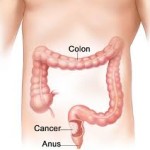 Complementary and alternative medicine practices are the terms used for products and practices that are not part of traditional standard care offered through Western medicine. Standard care is defined as what medical doctors, doctors of osteopathy and allied health professionals consider good practice. Alternative medicine practices are treatments that can be used instead of standard practices and complementary medicine is nonstandard treatments that are used alongside of, or in adjunct to, standard medical practices.
Complementary and alternative medicine practices are the terms used for products and practices that are not part of traditional standard care offered through Western medicine. Standard care is defined as what medical doctors, doctors of osteopathy and allied health professionals consider good practice. Alternative medicine practices are treatments that can be used instead of standard practices and complementary medicine is nonstandard treatments that are used alongside of, or in adjunct to, standard medical practices.
Commonly these alternative medical practices are untested in clinical trials. There may be case study information available but these case studies do not control for variables making the application of the practice more hit and miss. Because pharmaceutical companies provide the majority of the financial backing for clinical research, and because most alternative and complementary medicine practices do not involve the purchase of pharmaceutical drugs, these companies do not have a financial stake in supporting million-dollar research programs to demonstrate that products freely available in a health food store will perform as claimed.
It is estimated that alternative medicine practices are a $15 billion a year business. This may be because many individuals are turning to alternative practices that can help to control their diseases or prevent illnesses which do not involve taking more drugs. Although most insurance companies do not cover alternative medicine there is a growing trend to include these treatment protocols and policies once high deductibles are met.
The insurance companies that seem to buck the trends are American Western Life Insurance Company and Mutual of Omaha Insurance Company. The latter has reimbursed clients for the cost of nonsurgical alternative therapy for heart disease in patients being treated by the Director of Preventative Medicine Research Institute in Sausalito. The insurance company was quick to state that although they were not opening the door to covering all forms of alternative therapies they did consider this treatment protocol to have been an effective method in dealing with heart disease because it included methods which were known to health and the prevention of the disease such as vegetarian diet, meditation and exercise.
The National Institute of Health’s Office of Alternative Medicine has supported a number of research studies investigating such unorthodox treatments such as using shark cartilage to treat cancer or the effectiveness of bee pollen in treating allergies. There have been very few high-caliber scientific studies done by alternative practitioners and if studies are done at all they rarely use control groups or have adequate size samples. Methods used to blind the researchers or to increase the study size samples isn’t cost effective and may not result in the desired outcome.
The list of alternative medicine therapies is only as long as a practitioner’s imagination. New practices are being developed almost every year or two, some of which are based in theory of other alternative practices while others seem to come out of thin air. There are complementary medical practices and alternative practices which have great positive benefit in the overall health and well-being of individuals.
However, it is the ultimate responsibility of the individual who is trying new medical practices to investigate the efficacy and safety of the practice they are attempting. Without regard to either safety, efficacy, effectiveness or scientific research behind the theory some of the alternatives and complementary medicine practices are: applied kinesiology, Astros therapy, Angel therapy, allopathy, acupuncture, bio harmonics, chiropractic, craniosacral therapy, coning, detoxification therapies, chelation, holistic medicine, healing touch, homeopathy, integrative medicine, intuitive healer, magnet therapy, neuro linguistic programming, osteopathy, psychic surgery,Reiki, Rolfing, urine therapy and therapeutic touch. This is by no means an inclusive list and others can be found with just a bit of research.
Resources:
National Center for Complementary and Alternative Medicine
http://nccam.nih.gov/health/whatiscam
American Public Health Association: Alternative and Complementary Health Practice
http://www.apha.org/membergroups/primary/aphaspigwebsites/alt/
Discovery: Science and Society: 10 Most Popular Alternative medicine Treatments
http://dsc.discovery.com/tv-shows/curiosity/topics/10-most-popular-alternative-medicine-treatments.htm
Rapid City Journal: Boomers Take Advantage of Alternative Health Practices
http://rapidcityjournal.com/lifestyles/health-med-fit/boomers-take-advantage-of-alternative-health-practices/article_1b1d3654-2fd5-5819-a387-fb66ee63b651.html
Minnesota Department of Health: Alternative Health Care Practices
http://www.health.state.mn.us/divs/hpsc/hop/ocap/
College of Applied sciences and Arts: Complementary and Alternative Health Practices
http://www.sjsu.edu/casa/healthprofessions/cahp_minor/
Medical news Today: Alternative Health Practices Show Benefits for Chronic Pain
http://www.medicalnewstoday.com/releases/225912.php
Daemen College: Complementary and Alternative Health Care Practices
http://www.daemen.edu/academics/divisionofhealthhumanservices/healthcarestudies/undergraduateprograms/healthcarestudies/Pages/SpecializationComplementaryAlternativeHealthCarePractices.aspx
MedlinePlus: Complementary and Alternative Medicine
http://www.nlm.nih.gov/medlineplus/complementaryandalternativemedicine.html


Leave a Reply